

Hola querido hiver.
Tenía pendiente mostrar las fotografías que tomé durante mi viaje a la playa del fin de semana pasado. Al enterarme ayer de la creación de la nueva comunidad Photo-essay me pareció el lugar perfecto para alojar este recuerdo.
Lo que más me gusta del concepto tras @hive-14396 es que las reglas son escasas: bastan 5 fotografías acompañadas de 150 palabras y que nos cuentes eso que te ha parecido interesante o curioso. ¡Gracias @stresskiller y @melinda010100 por crear una comunidad tan acogedora!
Y, sin más preámbulos, paso a compartir el paseo que dimos hace una semana por este lugar tan pintoresco: el Roc de Sant Gaietà.

Nos situamos en Roda de Berà, en la provincia de Tarragona, España. Si conoces Barcelona, tomando la carretera C-32 que bordea toda la costa hacia el sur, esta localidad se encuentra a poco más de una hora en coche.
Una vez llegados a Roda de Berà encontramos señales que nos indican cómo alcanzar el protagonista de esta publicación. Te recomiendo que dejes el coche en el aparcamiento que hay justo antes de las vías del tren. Sabrás cuándo llegaste porque te encontrarás este bonito mosaico.
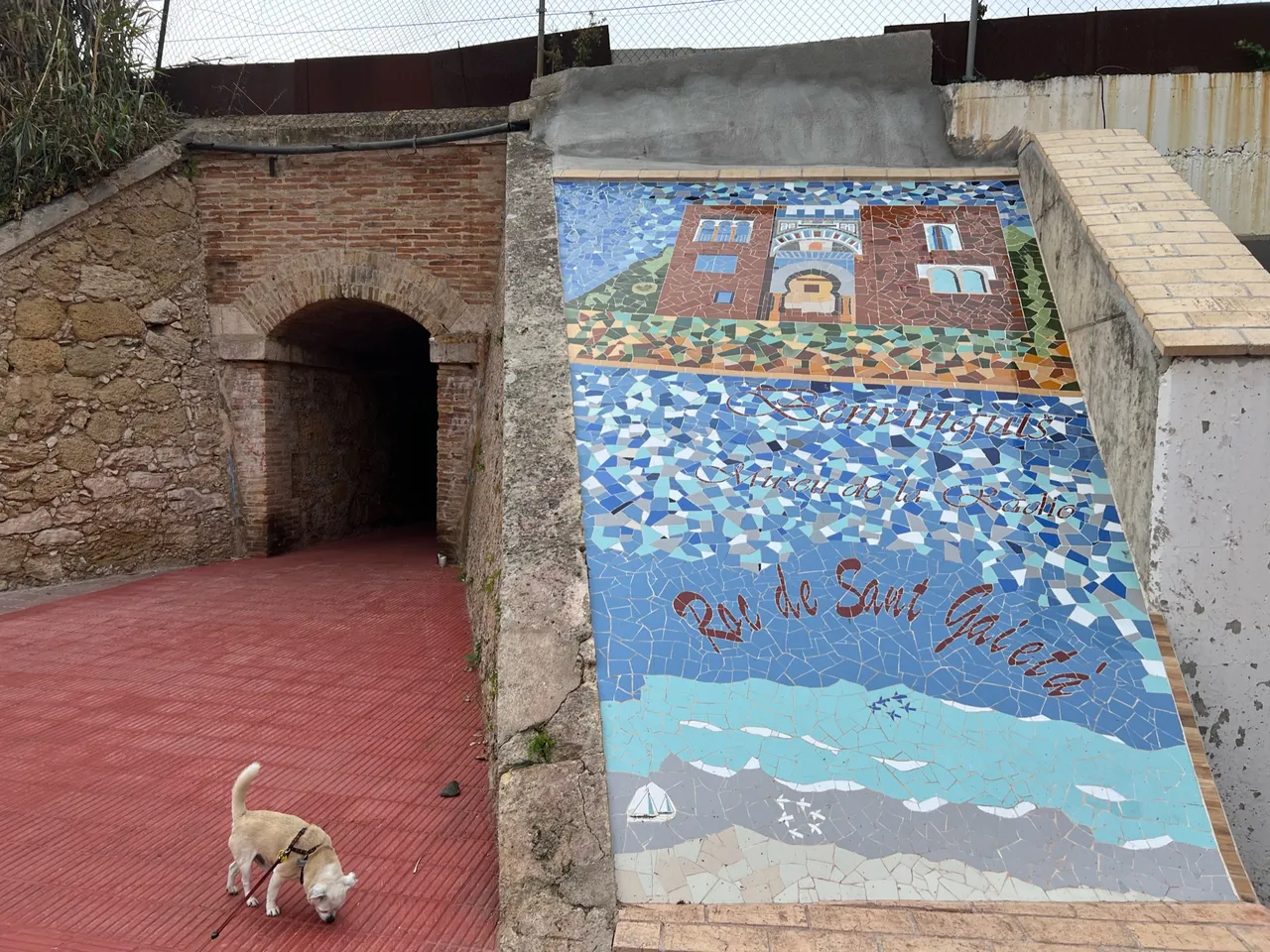
(Perrito no incluido) 😂
Una vez atravesado el túnel, estamos en disposición de explorar el lugar.
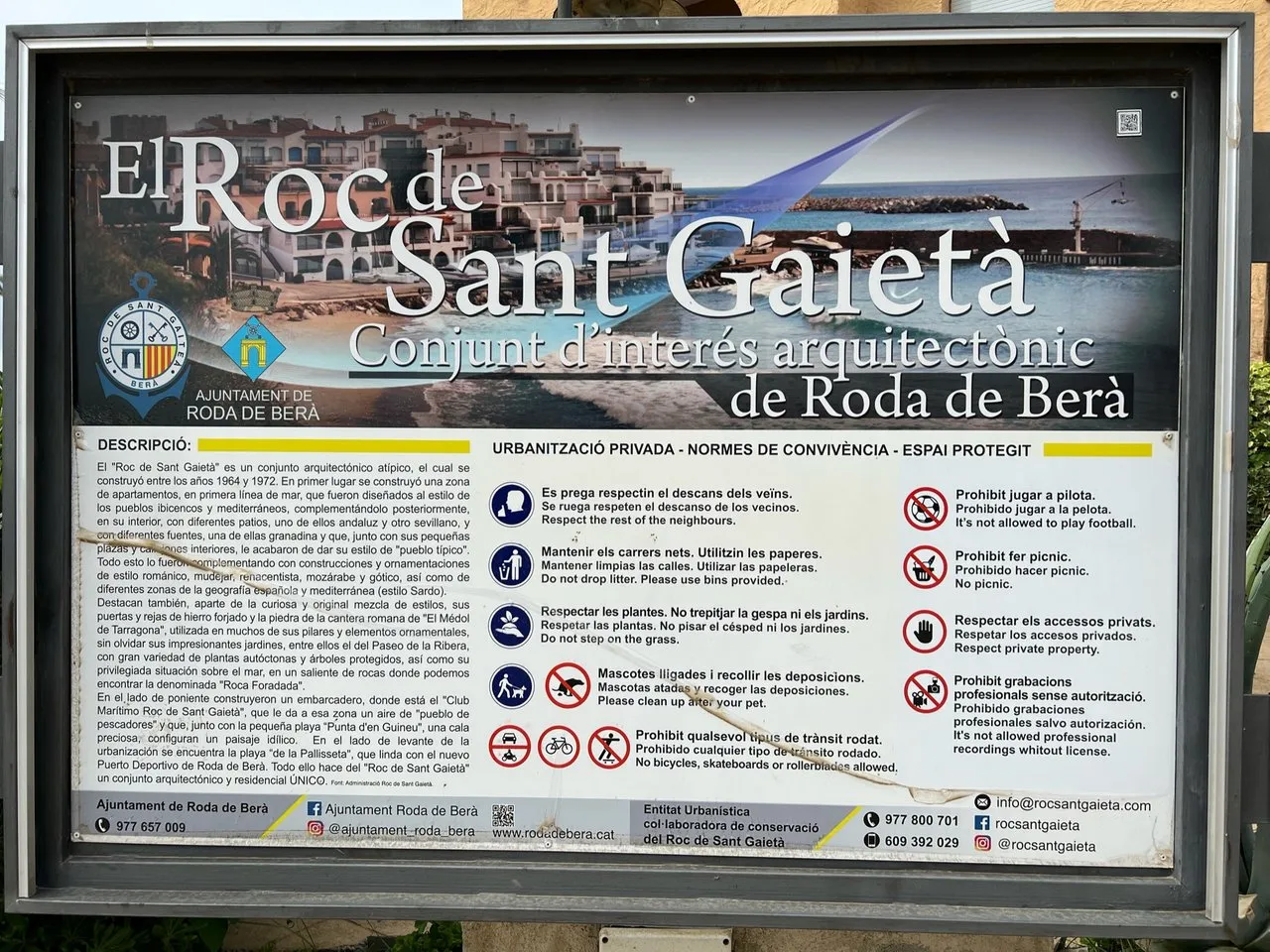
Es importante conocer las normas de convivencia de los lugares a los que vamos como turistas. Evitas disgustos y carteles como este, además, te aportan información sobre su historia.
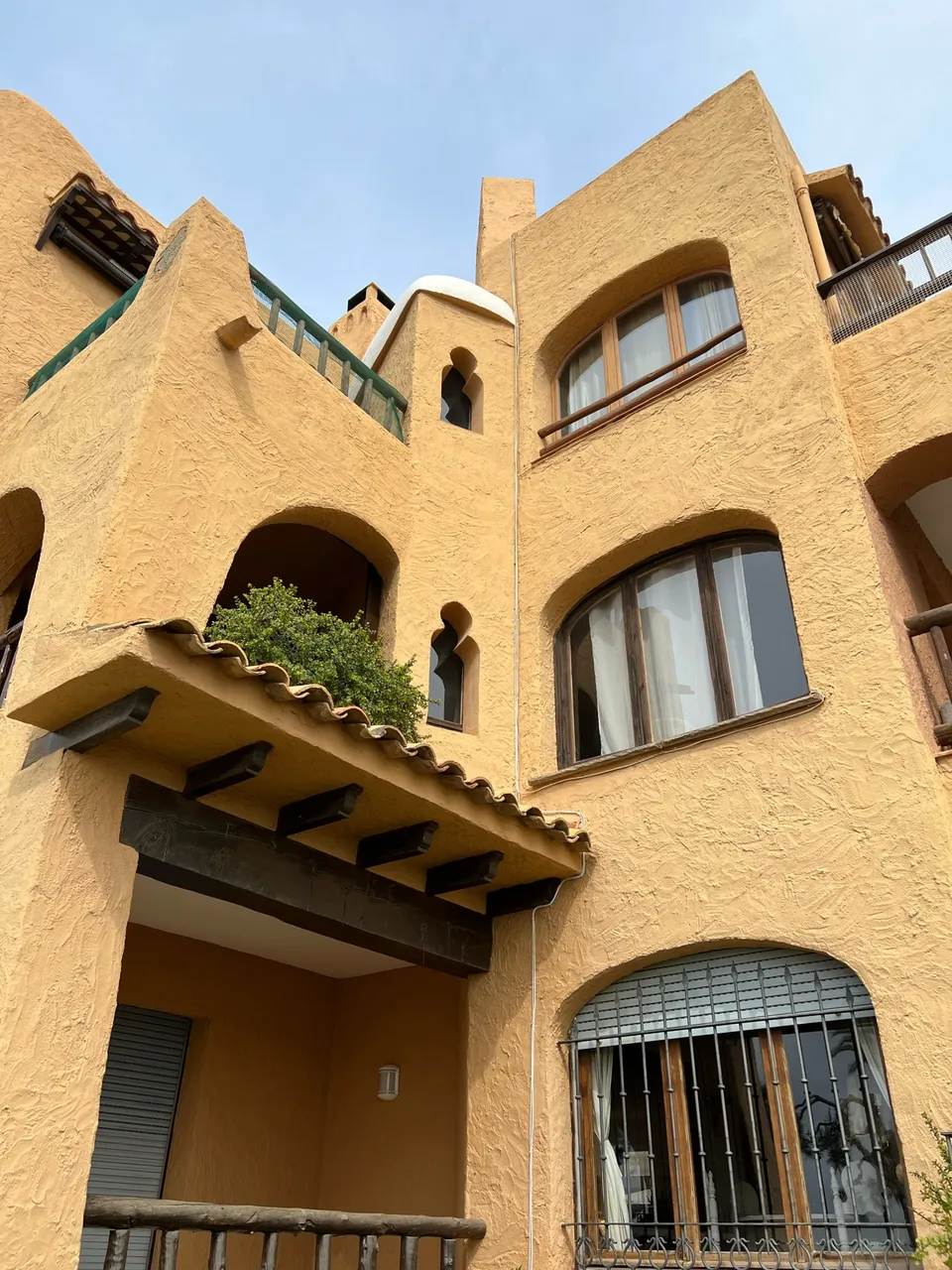
En realidad, historia, lo que se dice historia, este lugar no tiene mucha. Se construyó entre 1964 y 1972, aunque por lo que verás a continuación, se imitan diversos estilos arquitectónicos o construcciones típicas de otros lugares de España. El conjunto formado es curioso y atrae a numerosos visitantes, pero debemos tener en cuenta de que todo lo que vemos son apartamentos privados.
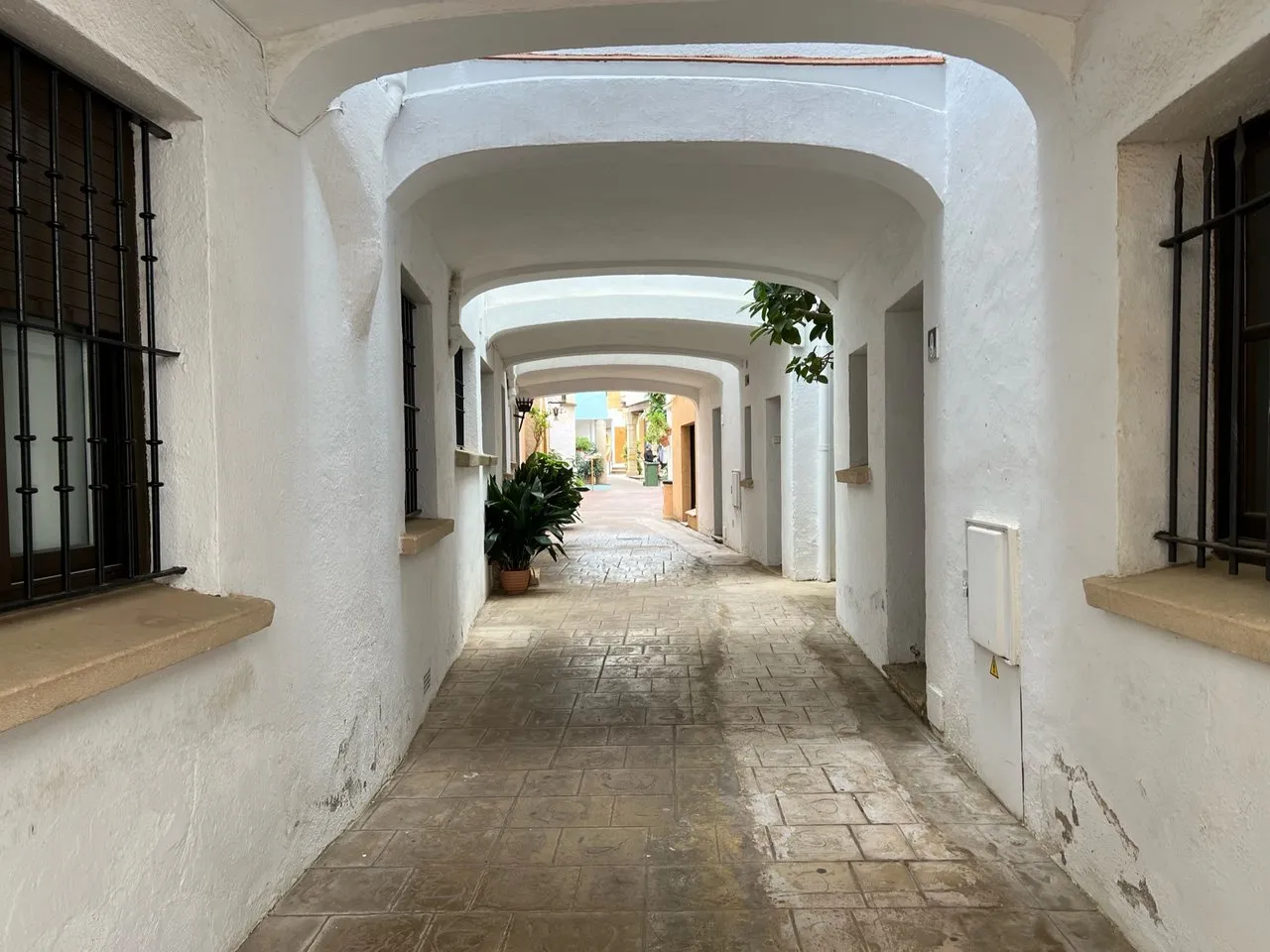
Los corredores que conectan los edificios ayudan a aliviar el calor y protegen de los rayos del sol, al tiempo que esconden rincones como el de la imagen siguiente:
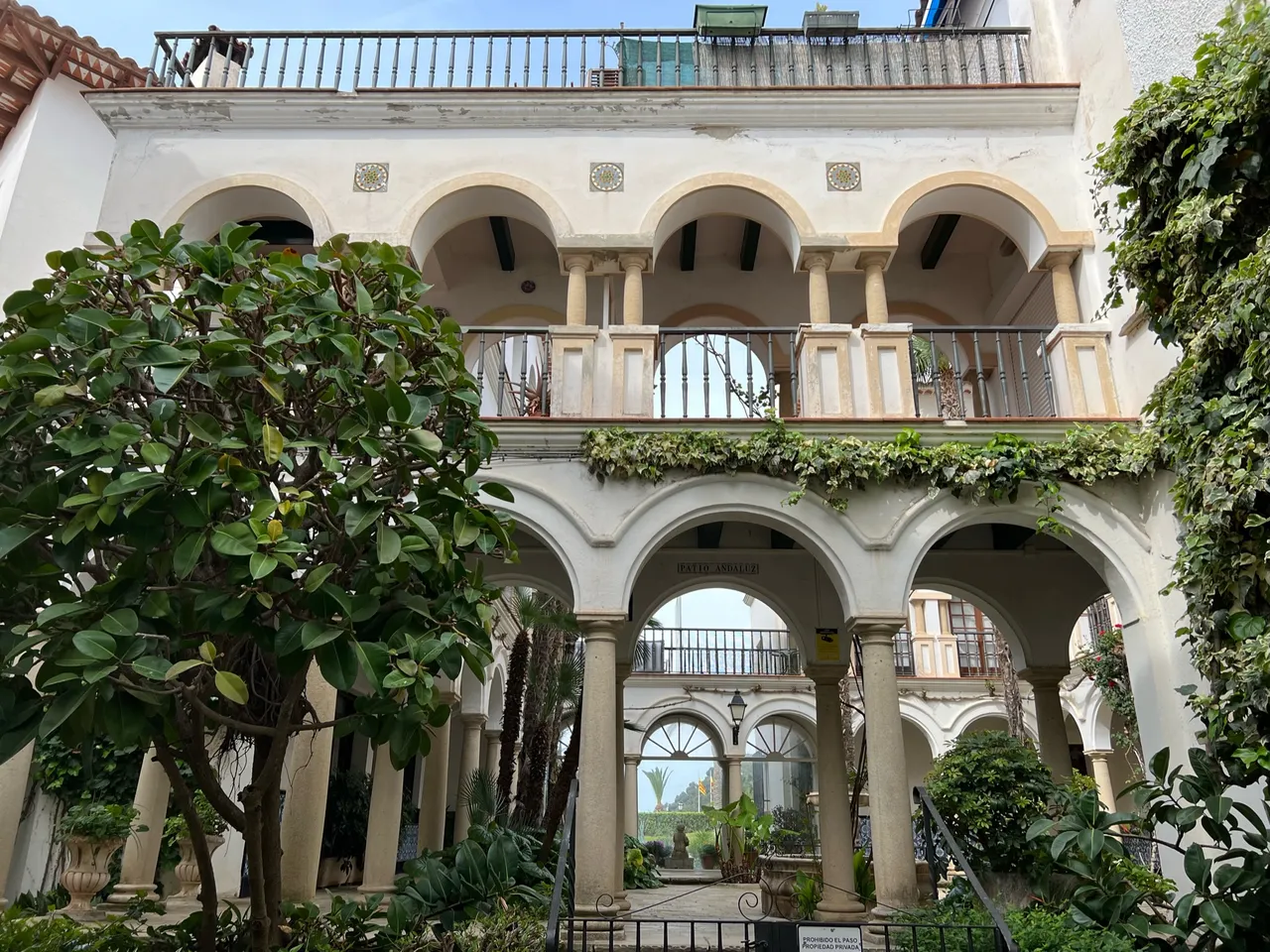
Imitación de un patio andaluz de estilo renacentista, al que no le faltan la frescura de las plantas, el zócalo de azulejos y su fuente:
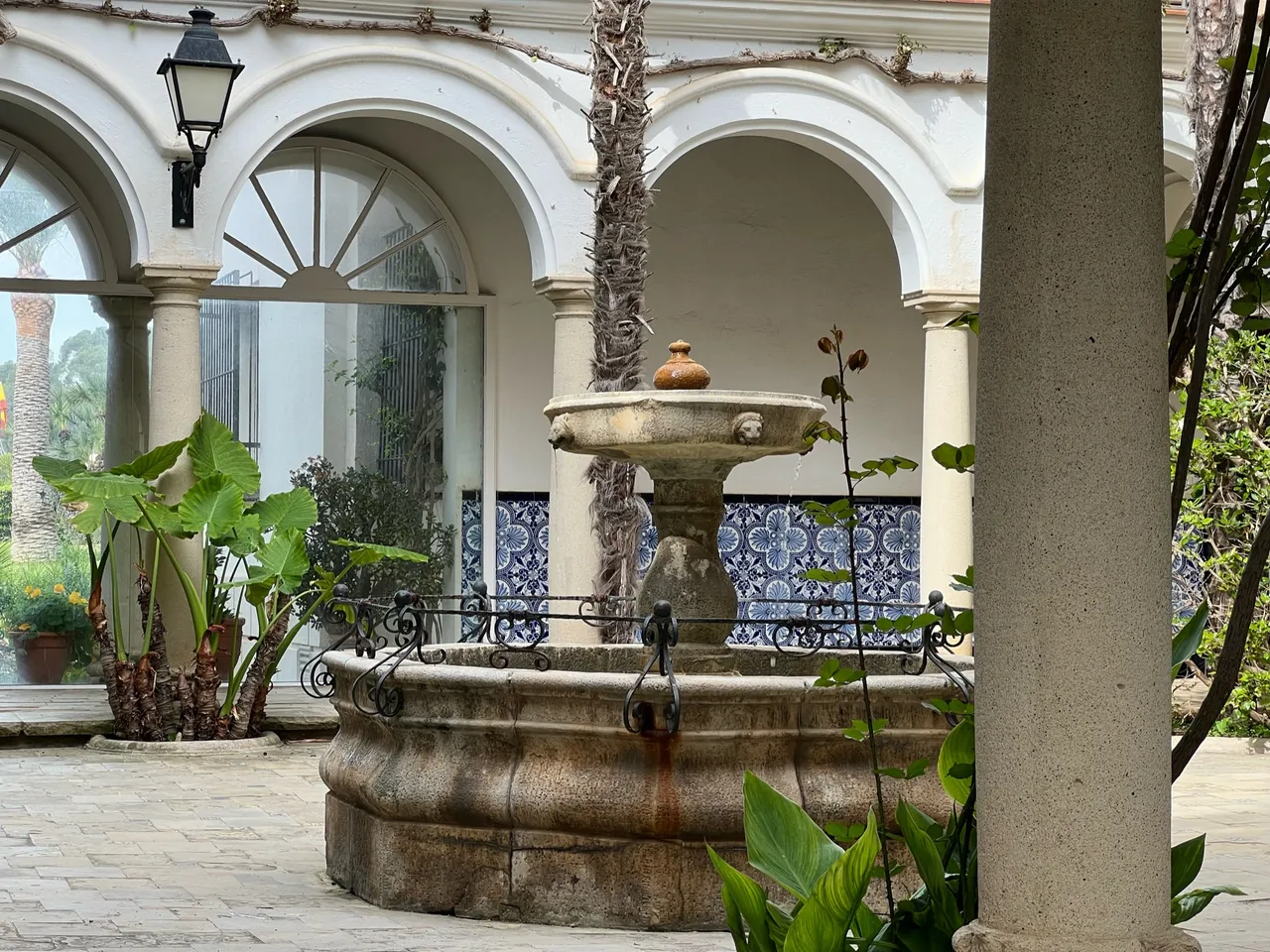
Pocos pasos más allá, un conglomerado que me resulta un tanto bizarro por la mezcla en tan escaso espacio:
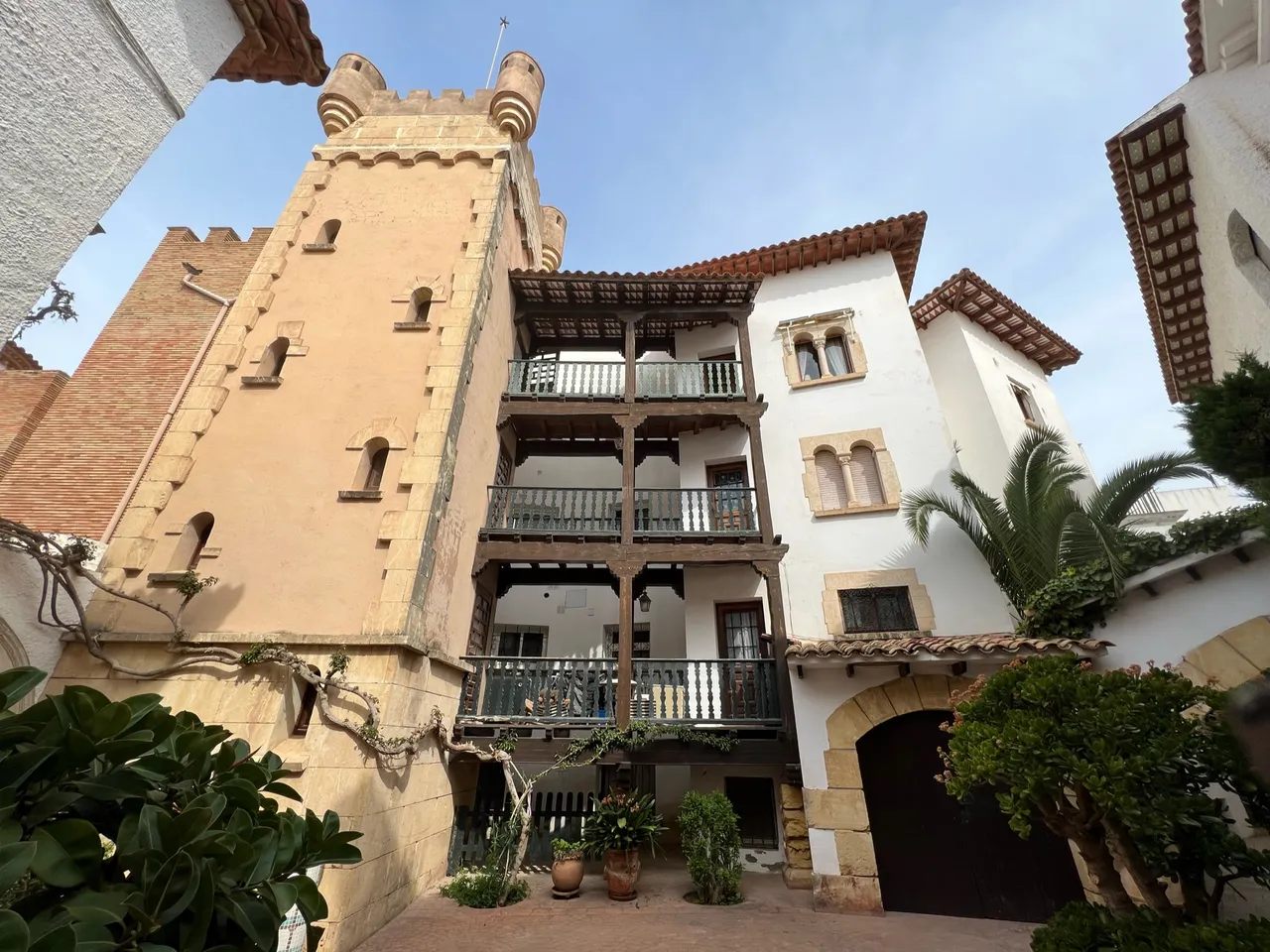
Me gusta encontrar detalles, si me sigues conocerás mi debilidad por las figuras geométricas y patrones.
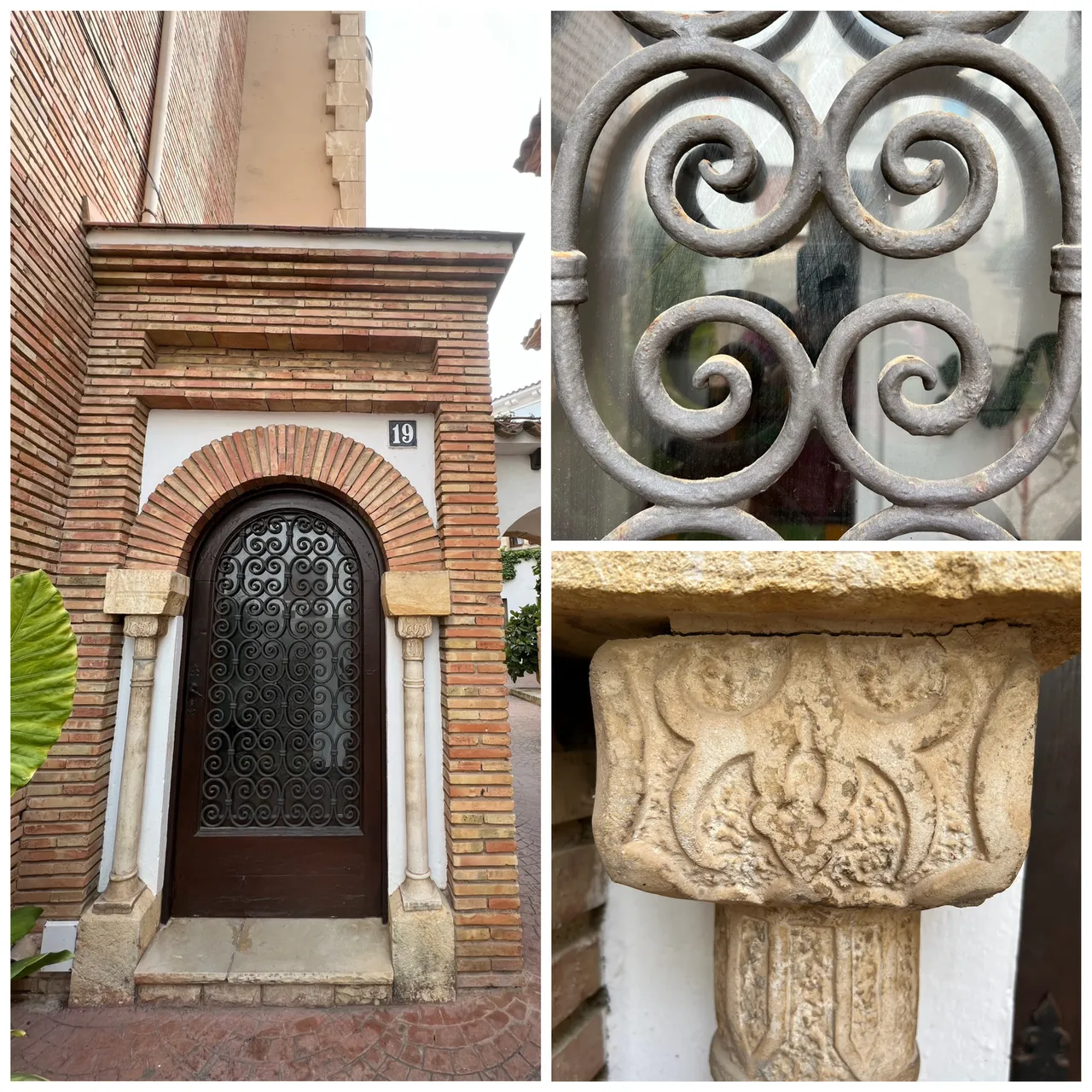
Un poco más adelante, saliendo del recinto principal, un nuevo rincón que combate los rigores del calor.
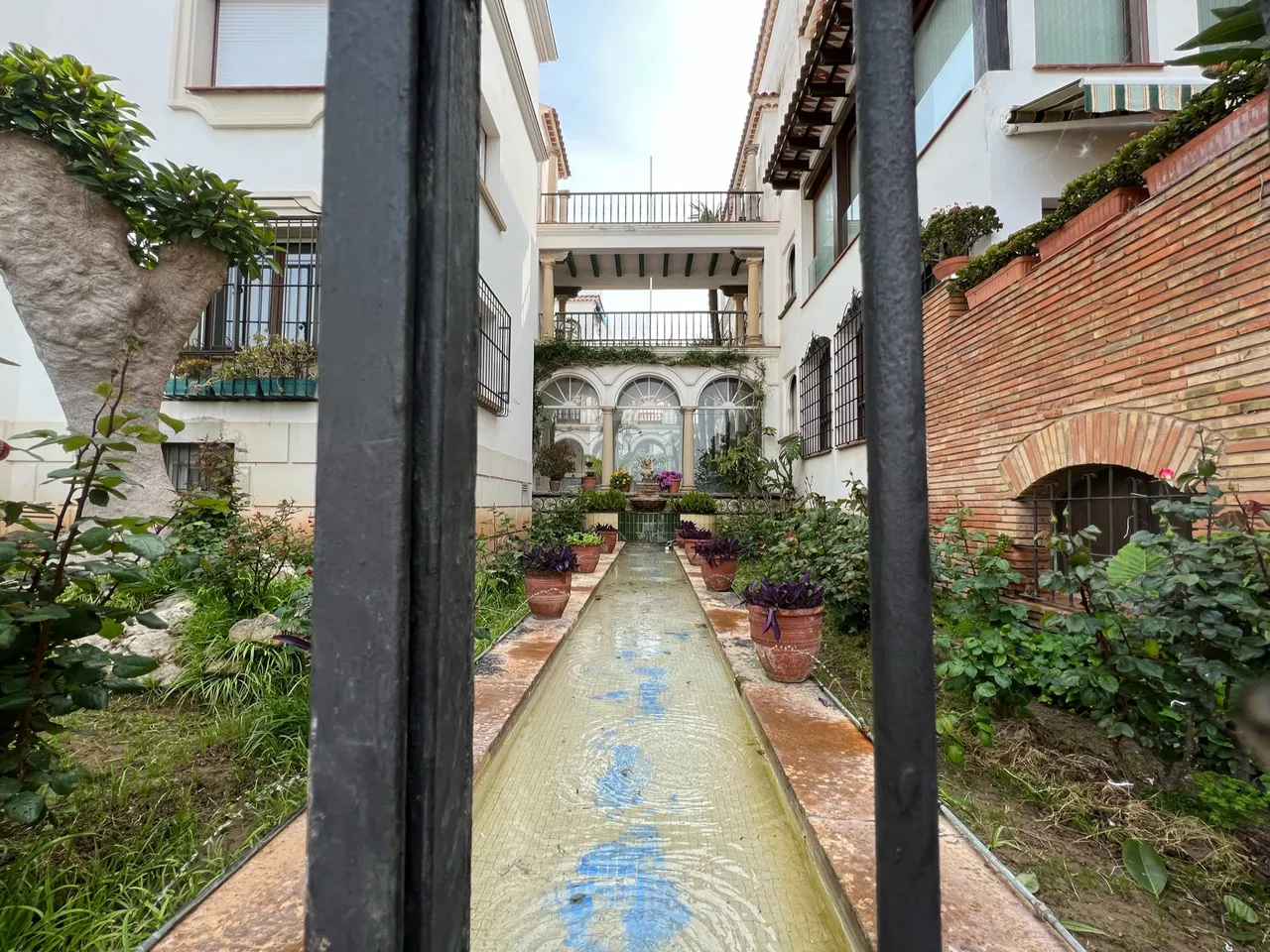
Sin mover los pies, tan solo girándonos hacia la derecha, tenemos enfrente la construcción que más me gustó de todo el conjunto.
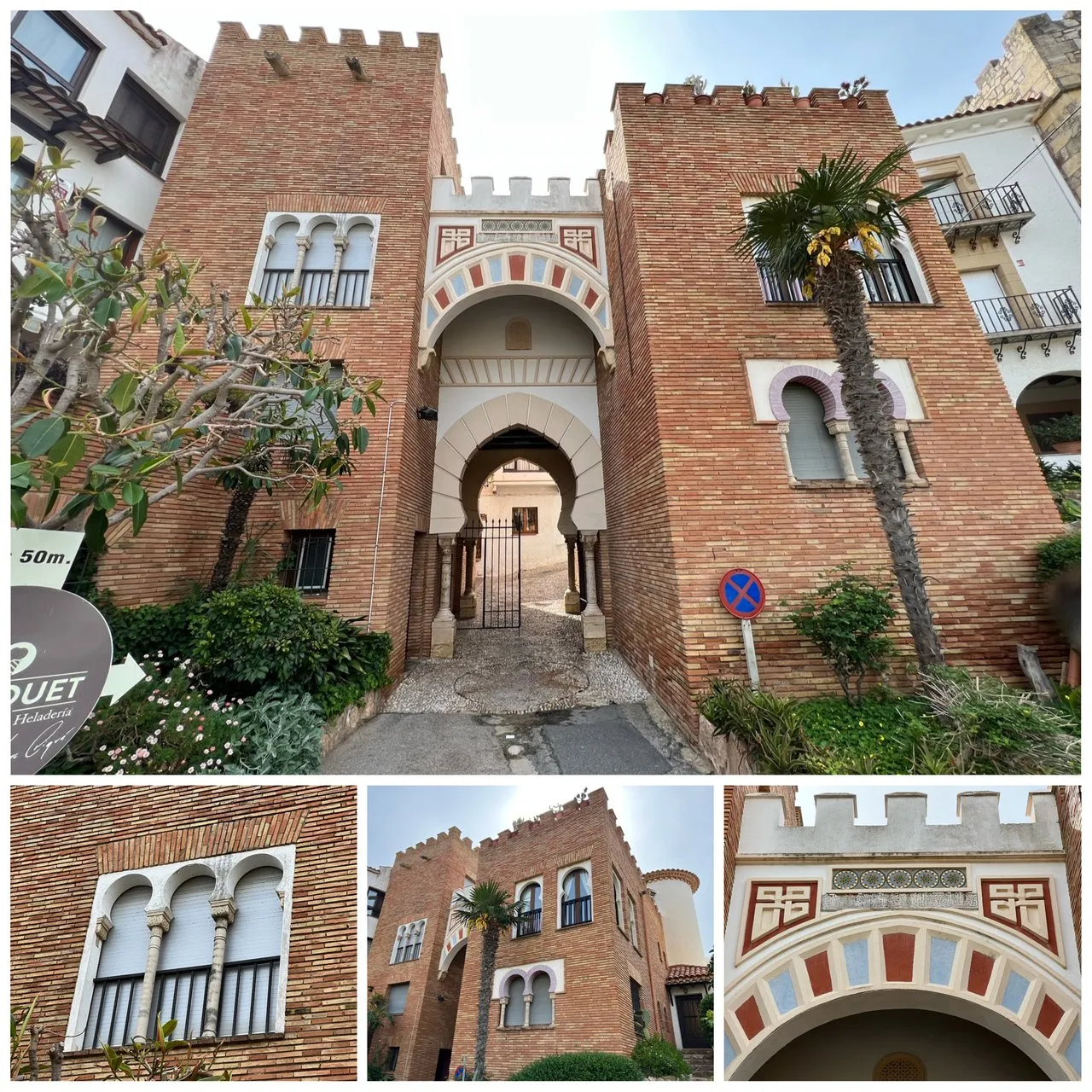
Esta es la Porta Mora, realizada al estilo de la Alhambra. Me gustaría saber a quién se le ocurrió colocar esa señal en el sitio menos oportuno, grrr.
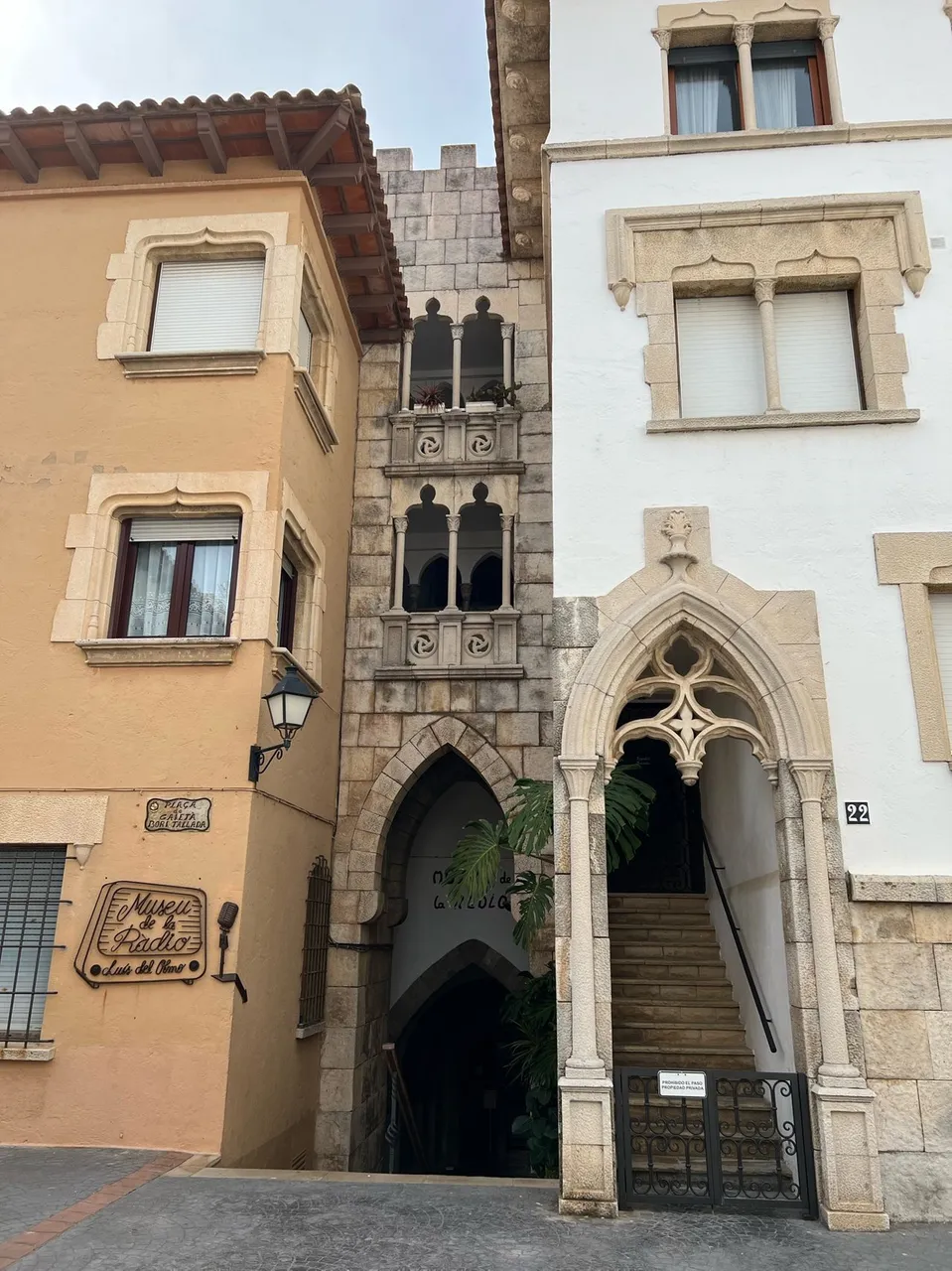
Otra edificación a destacar es esta imitación gótica que alberga el Museo de la Radio. En él se exponen numerosas piezas antiguas y premios concedidos al famoso periodista Luis del Olmo a lo largo de su trayectoria profesional.

Desde un mirador podemos contemplar la Playa Punta d'en Zorro. En esta mañana el mar estaba picado y había un grupo numeroso de surfistas.
Como la urbanización no es muy extensa, tomamos el paseo que bordea la playa a media altura. Así caminamos un poco más seguido y pude fotografiar el conjunto desde el otro lado:
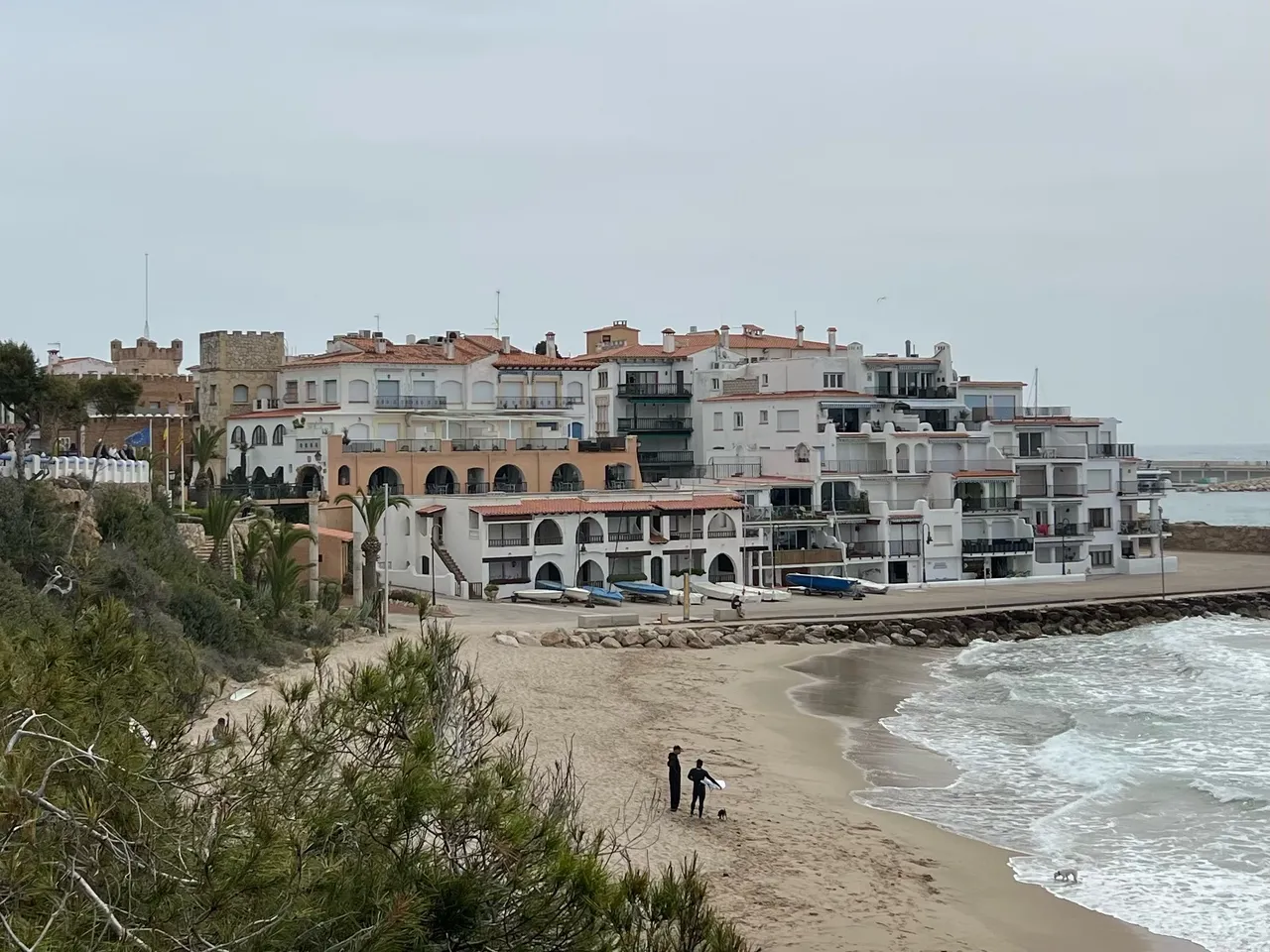
Ya solo nos quedaba deshacer nuestros pasos y volver hasta el coche para regresar al hotel.
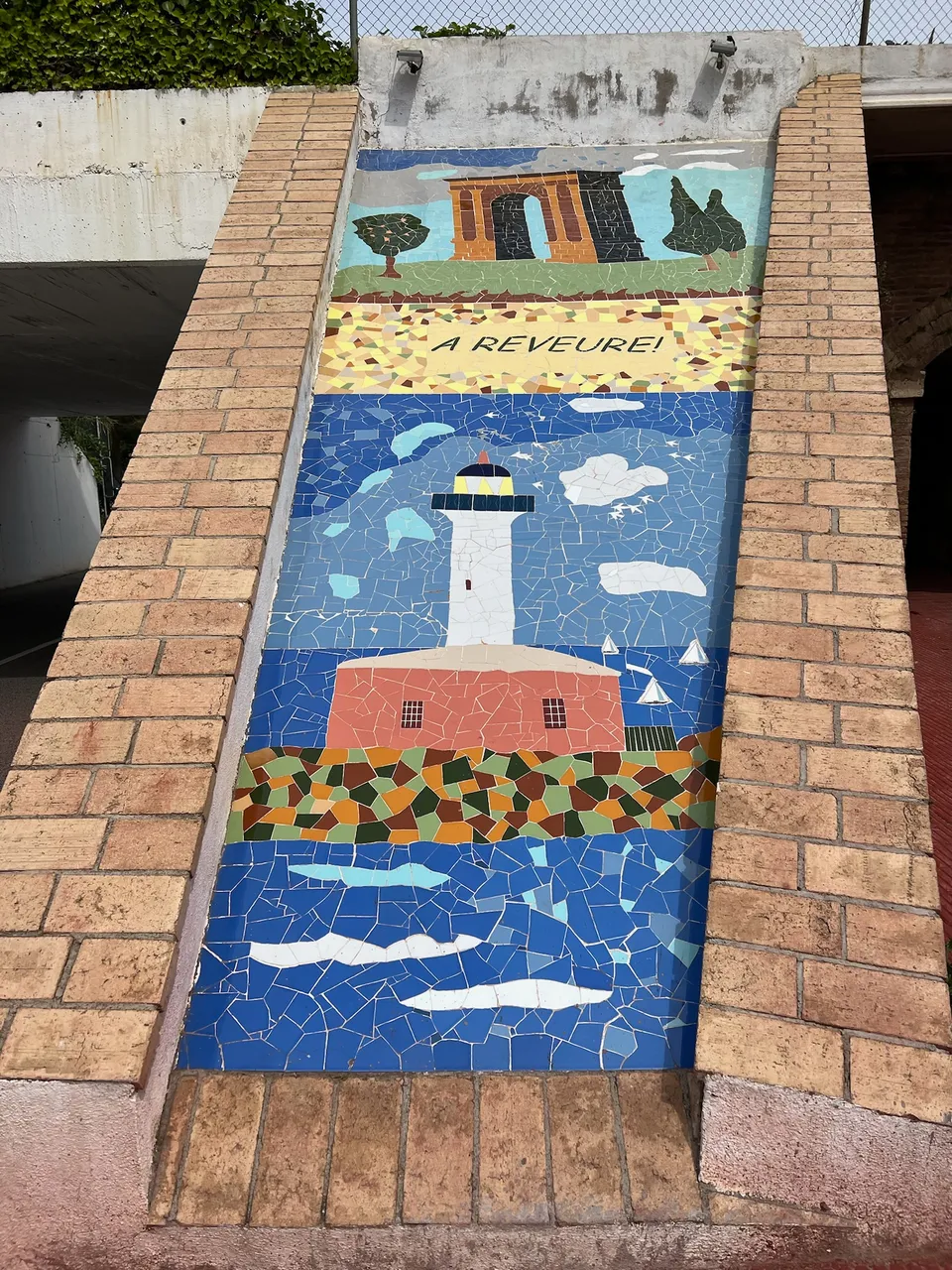
El túnel bajo las vías nos despidió con otro bonito mosaico.

Aviso: Todo lo publicado en este post es de mi autoría, excepto los elementos en los que doy crédito a su/s autor/es. Por tanto, en caso de plagio o difusión sin mi permiso, ejerceré mis derechos de autor si así lo estimo oportuno.
Realizo mis fotografías con mi móvil iPhone, las edito en el editor de fotos de Mac y con la versión gratuita de la aplicación PicsArt.
Si te gusta lo que publico, únete a mi Fanbase pinchando aquí




Hi, dear hiver.
I've been meaning to show the pictures I took during my trip to the beach last weekend. When I found out yesterday about the creation of the new Photo-essay community it seemed like the perfect place to host this memory.
What I like most about the concept behind @hive-14396 is that the rules are very few: 5 photos with 150 words and tell us what you found interesting or curious. Thanks @stresskiller and @melinda010100 for creating such a welcoming community!
And, without further ado, I'm going to share the walk we took a week ago through this picturesque place: the Roc of Sant Gaietà.

We are located in Roda de Berà, in the province of Tarragona, Spain. If you know Barcelona, taking the C-32 road that runs along the coast to the south, this town is just over an hour's drive away.
Once you get to Roda de Berà, you will find signs indicating how to reach the protagonist of this publication. I recommend that you leave your car in the car park just before the train tracks. You will know when you arrived because you will find this beautiful mosaic.

(Doggy not included) 😂
Once through the tunnel, we are ready to explore the place.

It is important to know the rules of coexistence of the places where we go as tourists. You avoid unpleasantness and signs like this one also give you information about their history.

Actually, this place doesn't have much of a history. It was built between 1964 and 1972, although from what you will see below, it imitates various architectural styles or typical constructions from other parts of Spain. The ensemble formed is curious and attracts many visitors, but we must bear in mind that all we see are private flats.

The corridors connecting the buildings help to alleviate the heat and protect from the sun's rays, while hiding nooks and crannies like the one in the picture below:

Imitation of an Andalusian courtyard in Renaissance style, with its cool plants, tiled plinth and fountain:

A few steps further on, a conglomeration that I find a little bizarre because of the mixture in such a small space:

I like to find details, if you follow me you will know my weakness for geometric figures and patterns.

A little further on, leaving the main enclosure, a new corner that fights the rigours of the heat.

Without moving our feet, just turning to the right, we have in front of us the construction that I liked the most of the whole complex.

This is the Porta Mora, built in the style of the Alhambra. I would like to know who thought of putting that sign in the most inopportune place, grrrr.

Another building of note is this Gothic imitation which houses the Radio Museum. It exhibits numerous antique pieces and prizes awarded to the famous journalist Luis del Olmo throughout his professional career.

From a viewpoint we can contemplate the Punta d'en Zorro beach. This morning the sea was choppy and there was a large group of surfers.
As the urbanisation is not very extensive, we take the promenade that borders the beach at half height. This way we walked a bit more often and I was able to photograph the whole complex from the other side:

Now we only had to retrace our steps and return to the car to go back to the hotel.

The tunnel under the tracks bid us farewell with another beautiful mosaic.

Notice: Everything published in this post is of my authorship, except for the elements in which I give credit to its author/s. Therefore, in case of plagiarism or dissemination without my permission, I will exercise my copyright if I deem it appropriate.
I take my photos on my iPhone, edit them with the Mac photo editor and the PicsArt application (free version).
Translated with (free version) www.DeepL.com/Translator
If you like my content, join my Fanbase clicking here



